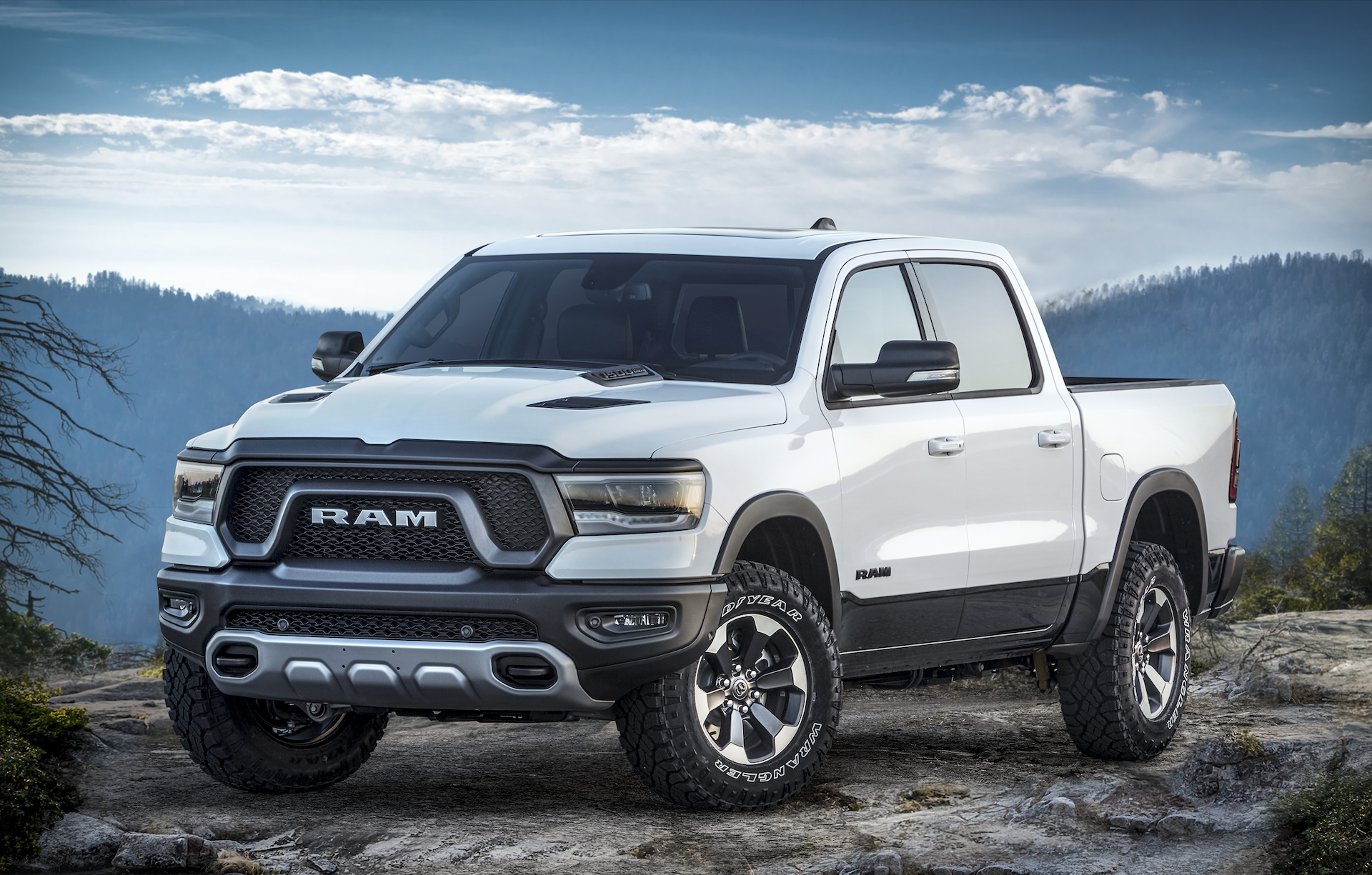A reliable air conditioning (A/C) system in a truck isn’t just a luxury it’s essential, especially during long hauls or hot summer days.
While most modern trucks are equipped with solid A/C systems, not all are built to last. Some trucks are notorious for frequent A/C failures, while others consistently deliver cool air without fuss.
Here’s a breakdown of five trucks known for their dependable A/C systems and five that often leave owners sweating.
5 Trucks With the Least A/C Failures
When the temperature rises, a reliable air conditioning system isn’t just a luxury—it’s a necessity, especially in a truck that’s built to handle tough jobs and long drives. But not all A/C systems are created equal. Some trucks are notorious for blowing hot air—literally—while others quietly deliver cold, consistent performance year after year.
In this article, we highlight five trucks that stand out for having the fewest A/C failures, based on owner reports and long-term reliability data. Whether you’re towing, hauling, or commuting in peak summer heat, these are the models that will keep you cool without frequent trips to the shop.
1. Toyota Tundra
The Toyota Tundra has built a reputation for reliability across the board, and its A/C system is no exception. Owners rarely report issues even past 100,000 miles.
The A/C consistently performs well in both extreme heat and humid conditions, making it a favorite among those in hot climates.
Why It’s Reliable:
- Strong build quality
- High-quality compressors and evaporators
- Excellent service record
New for 2025, the TRD-inspired Rally Package makes a bold impression with its signature Toyota Baja racing livery—red, orange, and yellow—paired with a suite of off-road upgrades designed for confidence on any terrain. Outfitted with 18-inch TRD off-road wheels wrapped in all-terrain tires, the Rally Package also features advanced systems like Multi-Terrain Select and Crawl Control, offering serious capability in nearly every driving condition.
Inside, the vintage-themed color palette is paired with SoftTex-trimmed seats that are both stylish and low-maintenance, delivering a blend of retro appeal and modern comfort. For those seeking a highly capable pickup, the Rally Package Tundra stands out as a top contender.
For drivers who demand top-tier off-road performance, the 2025 Tundra lineup offers plenty of options—chief among them, the Tundra TRD Pro.
This model comes standard with Multi-Terrain Select, Downhill Assist Control, and Crawl Control. These systems allow the driver to maintain a set speed over rugged terrain while focusing solely on steering. Crawl Control even lets you choose from five selectable speeds to best suit the conditions.
The TRD Pro trim is further equipped with an enhanced suspension system that includes a factory 1.1-inch front lift and 2.5-inch FOX Internal Bypass coilovers with rear remote reservoirs. Xply Armor high-strength underbody protection helps shield the engine, fuel tank, and transfer case from off-road hazards.
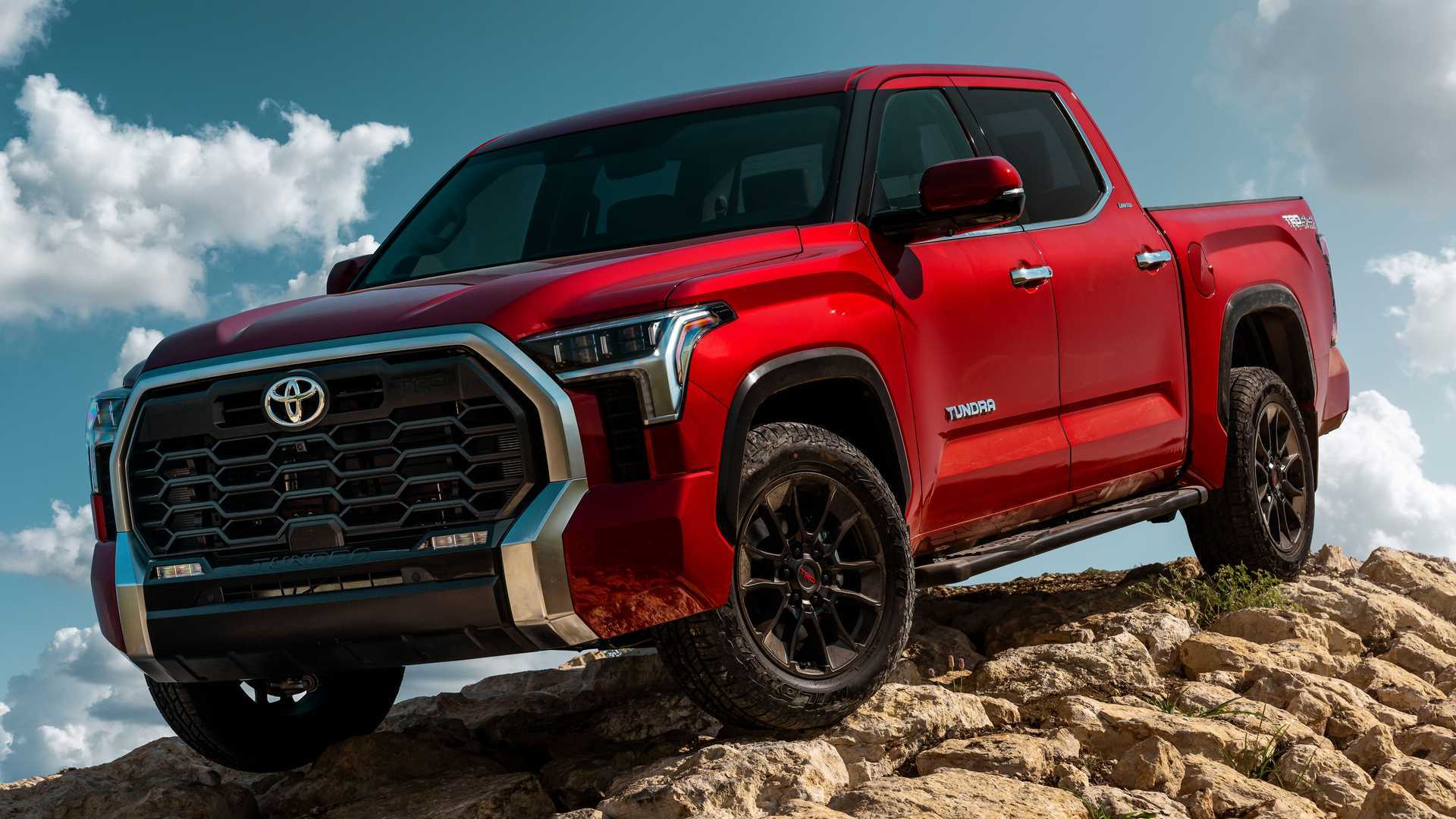
Those who want off-road capability without committing to the full TRD Pro package can opt for the TRD Off-Road Package. This variant includes an electronic locking rear differential and a Multi-Terrain Monitor, which displays the truck’s immediate surroundings to make navigating rough terrain easier and safer.
The 2025 Toyota Tundra continues to impress with its balance of power and efficiency. The standard i-FORCE 3.4-liter twin-turbo V6 engine delivers 389 horsepower and 479 lb-ft of torque, giving the truck strong performance right out of the gate.
For even greater power and improved fuel economy, the Limited, Platinum, 1794 Edition, and Capstone trims feature the i-FORCE MAX hybrid powertrain.
This advanced system combines the 3.4-liter engine with a motor generator to produce 437 horsepower and 583 lb-ft of torque. Rear-wheel-drive i-FORCE MAX models boast an EPA-estimated 22 mpg combined, while four-wheel-drive variants achieve 20 mpg. Considering the Tundra’s maximum towing capacity of 11,450 pounds, these numbers are exceptionally competitive.
The Tundra’s interior has been thoughtfully designed for comfort and usability, offering supportive seating and generous space for both head and legroom.
On the safety front, the Tundra delivers with high-tech options like the available Blind Spot Monitor with Trailer Assist, which helps detect nearby vehicles while towing. The Panoramic View Monitor adds further confidence by giving a 360-degree view of the truck’s surroundings, making parking and maneuvering in tight areas more manageable.
The exterior design is as bold as it is functional, highlighted by a tri-color striped front grille and purpose-built off-road wheels. These styling elements don’t just look tough—they contribute to enhanced off-road performance as well.
With refreshed styling, advanced tech, and proven durability, the 2025 Tundra raises the bar once again. Whether your priorities are heavy-duty towing, trail-ready ruggedness, or a well-appointed cabin, the newest Tundra delivers across the board.
2. Honda Ridgeline
Though not a traditional body-on-frame truck, the Ridgeline boasts one of the most dependable HVAC systems in its class. Its A/C performance is highly rated in both customer satisfaction and reliability studies.
Why It’s Reliable:
- Car-like engineering reduces mechanical stress
- Simplified layout leads to fewer failure points
- Low repair rate across model years
The 2025 Honda Ridgeline continues to stand out in the midsize pickup segment with a balanced mix of practicality, comfort, and performance. Among its various trims, the RTL 4dr Crew Cab AWD SB remains a popular choice, featuring a 3.5-liter V6 gas engine paired with a 9-speed shiftable automatic transmission.
This configuration starts at an MSRP of $42,980. With a combined fuel economy rating of 21 MPG, the Ridgeline runs on regular unleaded fuel and delivers an EPA-estimated 18 MPG in the city and 24 MPG on the highway. The cost to drive is estimated at $187 per month.
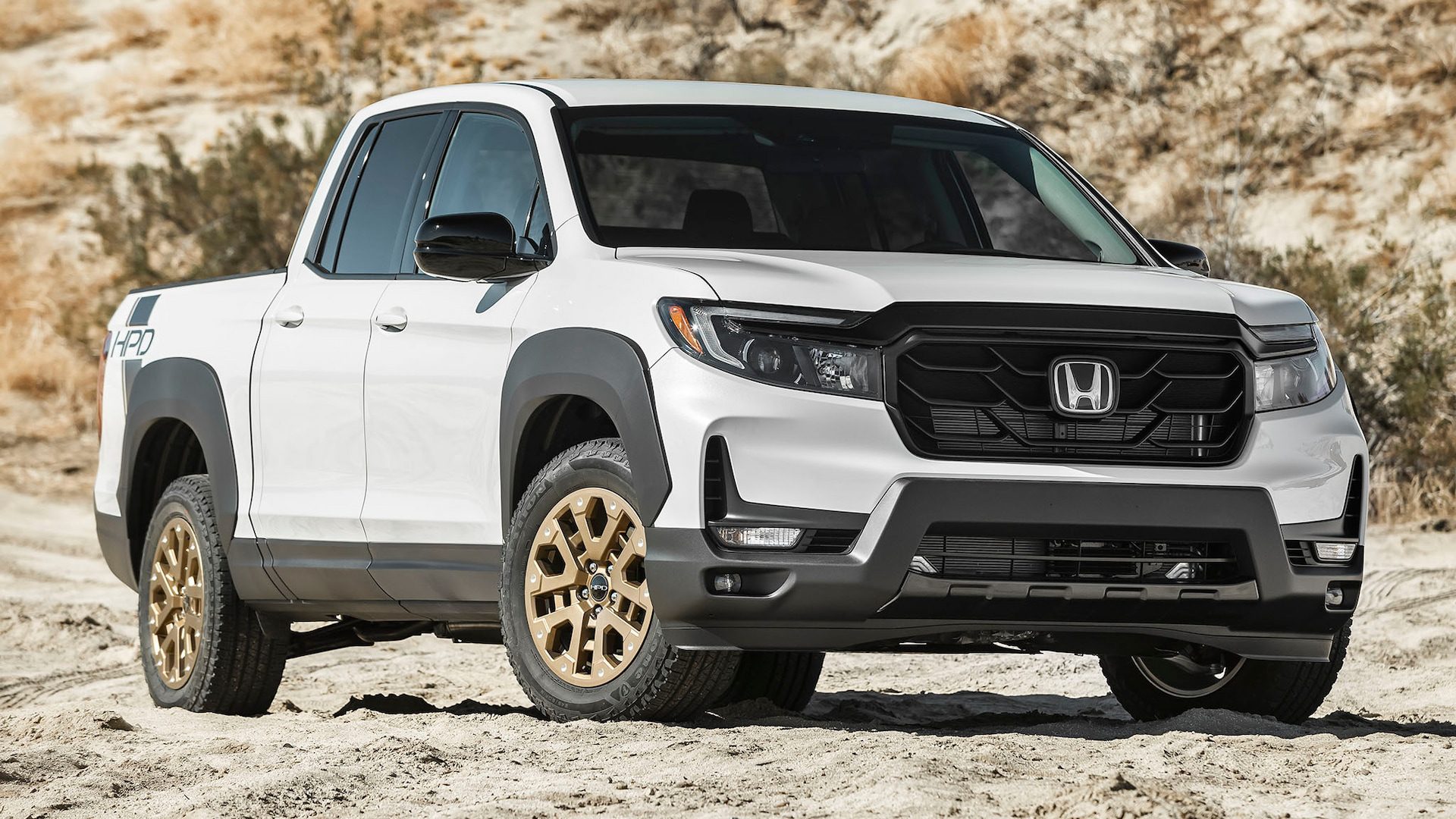
Built with all-wheel drive, the Ridgeline provides confident handling in diverse conditions. Its drivetrain also includes a standard center and rear limited-slip differential, enhancing traction when needed. The truck accommodates up to five passengers comfortably and offers a 64-inch bed length for added utility.
It boasts a maximum payload capacity of 1,544 pounds and can tow up to 5,000 pounds, making it suitable for both work and recreation. The curb weight of the vehicle is 4,480 pounds. Honda backs the Ridgeline with a 3-year/36,000-mile basic warranty, and final assembly takes place in the United States.
In terms of mechanical specifications, the base engine is a 3.5-liter V6 that runs on gasoline. The 9-speed automatic transmission ensures smooth gear transitions, while the AWD system and differential setup help optimize performance on and off the pavement.
The 2025 Ridgeline offers a wide array of standard and optional features across several categories, including suspension, vehicle dimensions, color options, interior space for both front and rear passengers, and an array of safety technologies.
Additional offerings include in-car entertainment systems, power and convenience features, advanced instrumentation, upgraded tires and wheels, telematics systems, and available equipment packages tailored to different driving needs.
For buyers in the market, several 2025 Ridgeline models are currently available for sale. Listings include the TrailSport Crew Cab with an MSRP of $41,990, another TrailSport Crew Cab listed at $42,590, and a Black Edition Crew Cab priced at $39,997. Whether you’re looking for refined capability, versatile performance, or advanced tech, the 2025 Honda Ridgeline presents a compelling package for a wide range of drivers.
3. Ford F-150 (2015–2020)
The 13th generation Ford F-150 saw major improvements in overall build quality, including the HVAC system. A/C issues are rare, especially when owners keep up with basic maintenance.
Why It’s Reliable:
- Redesigned system with improved durability
- Upgraded climate control modules
- Solid owner feedback over time
While the initial backlash over not choosing a V8 engine has softened—much like how Ford’s once-controversial switch to an aluminum body for the F-150 is now widely viewed as forward-thinking rather than foolish—the EcoBoost lineup remains a solid offering.
Still, if it were my money, I’d opt for the hybrid. It’s available as a $1,900 upgrade on the 2025 F-150 SuperCrew Lariat and also offered on the XLT, Lariat, King Ranch, and Platinum trims.
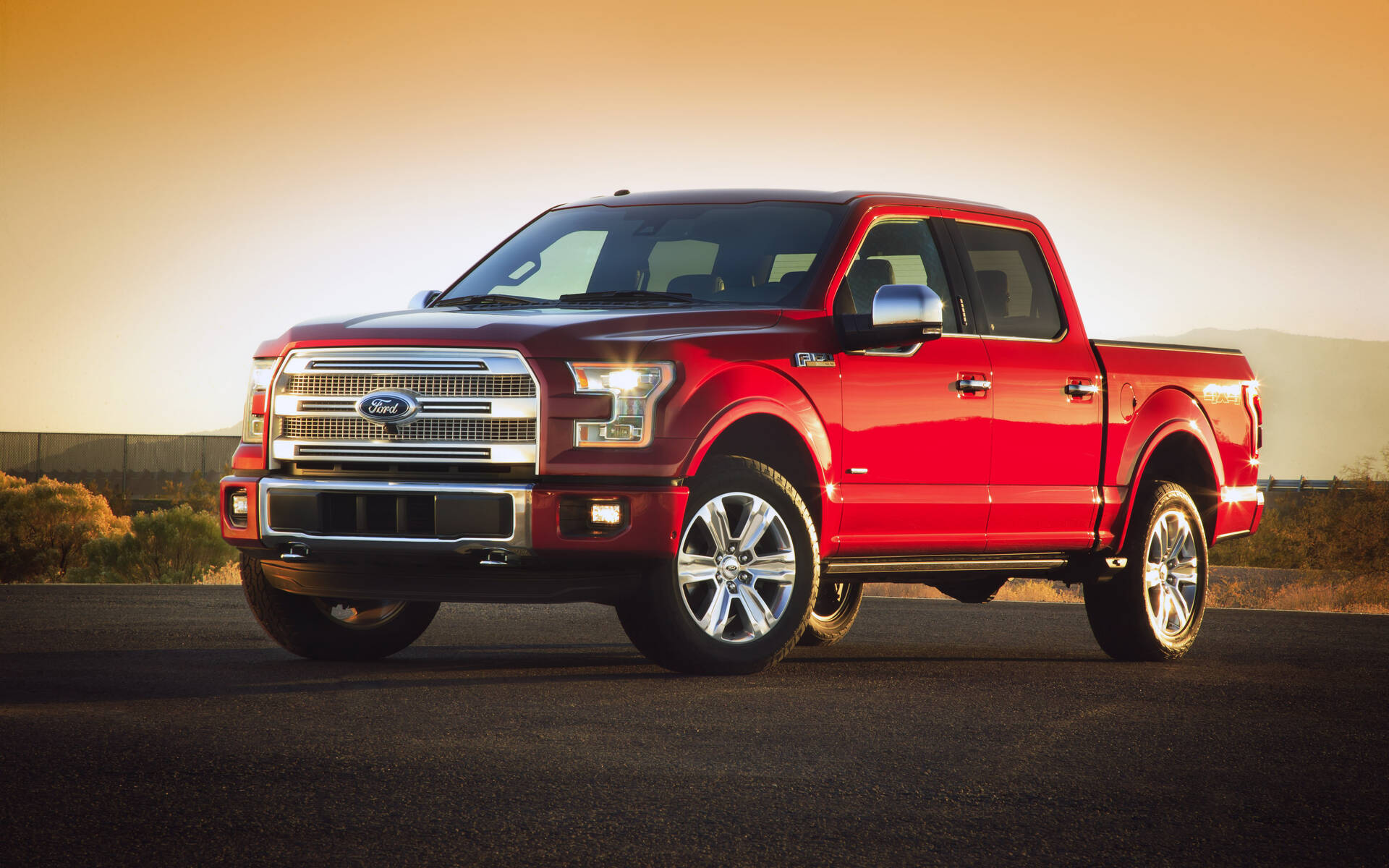
This hybrid setup boosts the output of the standard 3.5-liter turbocharged V6 from 400 horsepower and 510 lb-ft of torque to 430 horsepower and 570 lb-ft. It comes paired with a 10-speed automatic transmission and four-wheel drive as standard equipment.
More significantly, the hybrid system transforms the driving experience in day-to-day conditions. While the standard EcoBoost engine isn’t particularly hampered by turbo lag, the added electrification provides a more immediate and satisfying surge of power that makes it easier to forget you’re behind the wheel of a full-size truck.
4. Chevrolet Silverado 1500 (2020–Present)
Chevy has improved HVAC reliability significantly in its recent Silverado models. The latest generation is praised for quick cooling and strong airflow, with minimal reports of system failures.
Chevrolet offers an exceptionally wide variety of Silverado 1500 configurations—ranging from a basic, no-frills work truck to a street-focused performance model, rugged off-road machines, and even a luxurious long-distance cruiser capable of driving itself. No matter the version, the Silverado 1500 is always ready to get the job done, thanks to practical features like integrated rear bumper bed steps and an available six-function tailgate that enhances utility.
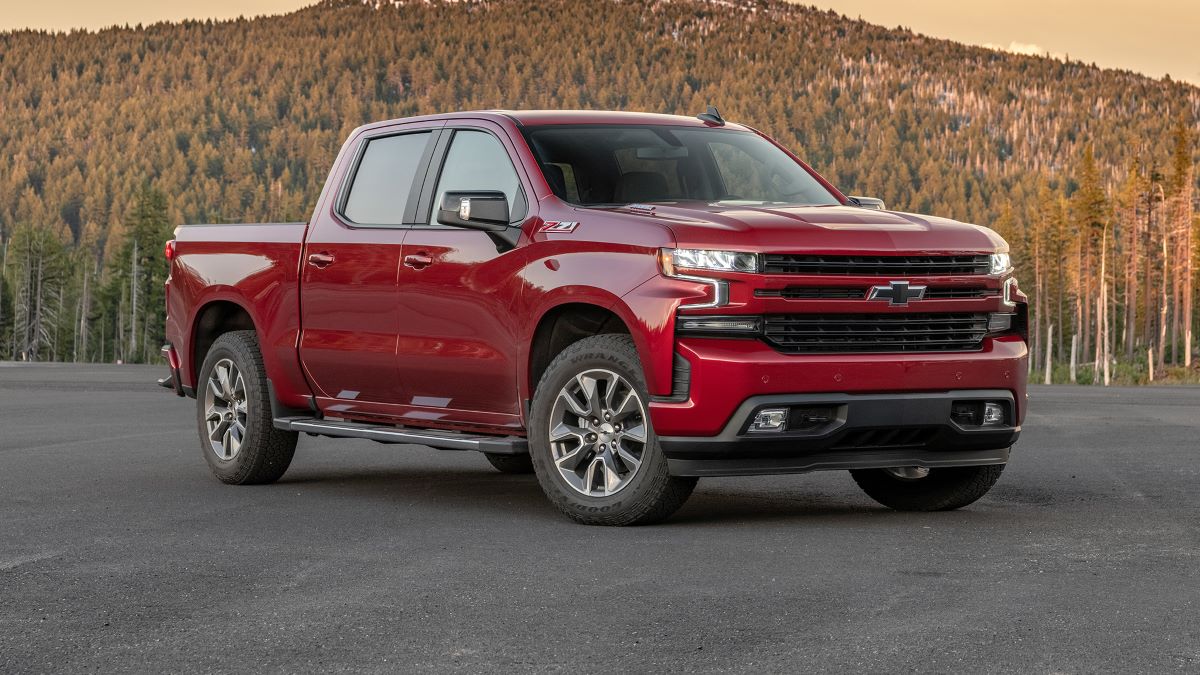
The 2022 model year introduced a number of significant updates, most notably a heavily revamped interior. This redesign brought a more upscale appearance, improved materials, and a generous infusion of digital tech.
However, it’s important to note that not every Silverado 1500 benefits from this overhaul—entry-level trims still feature the outdated pre-refresh cabin, which lacks the premium feel. Additionally, the truck’s bold and aggressive exterior design might be too much for some buyers’ tastes.
Even though the Silverado 1500 doesn’t hold the top spot in the full-size truck segment, it continues to be a dependable and appealing choice. Its long-standing reputation for durability and the sheer variety of trims and setups—especially with the expanded lineup introduced for 2024—make it a truck that remains very much worth considering.
Why It’s Reliable:
- Newer compressor designs
- Improved cabin filtration system
- Minimal known defects
5. RAM 1500 (2019–Present)
The fifth-gen RAM 1500 continues to impress with refined interiors and reliable A/C systems. The dual-zone climate control performs well, and failure rates have stayed low.
The Ram 1500 is offered in a wide range of trim levels and two cab configurations—quad and crew—along with a choice between V-6 and V-8 engines.
Both gas powertrains can be paired with a 48-volt hybrid system, although the engines themselves remain unchanged from previous iterations. The lineup also features an available 3.0-liter EcoDiesel V-6, which produces an impressive 480 lb-ft of torque—surpassing comparable diesel options in half-ton pickups from Chevrolet and Ford.
When properly equipped, the Ram 1500 can tow up to 12,750 pounds and haul a maximum payload of 2,320 pounds. For those seeking off-road capability, the Rebel trim stands out with a more aggressive design and true all-terrain performance.
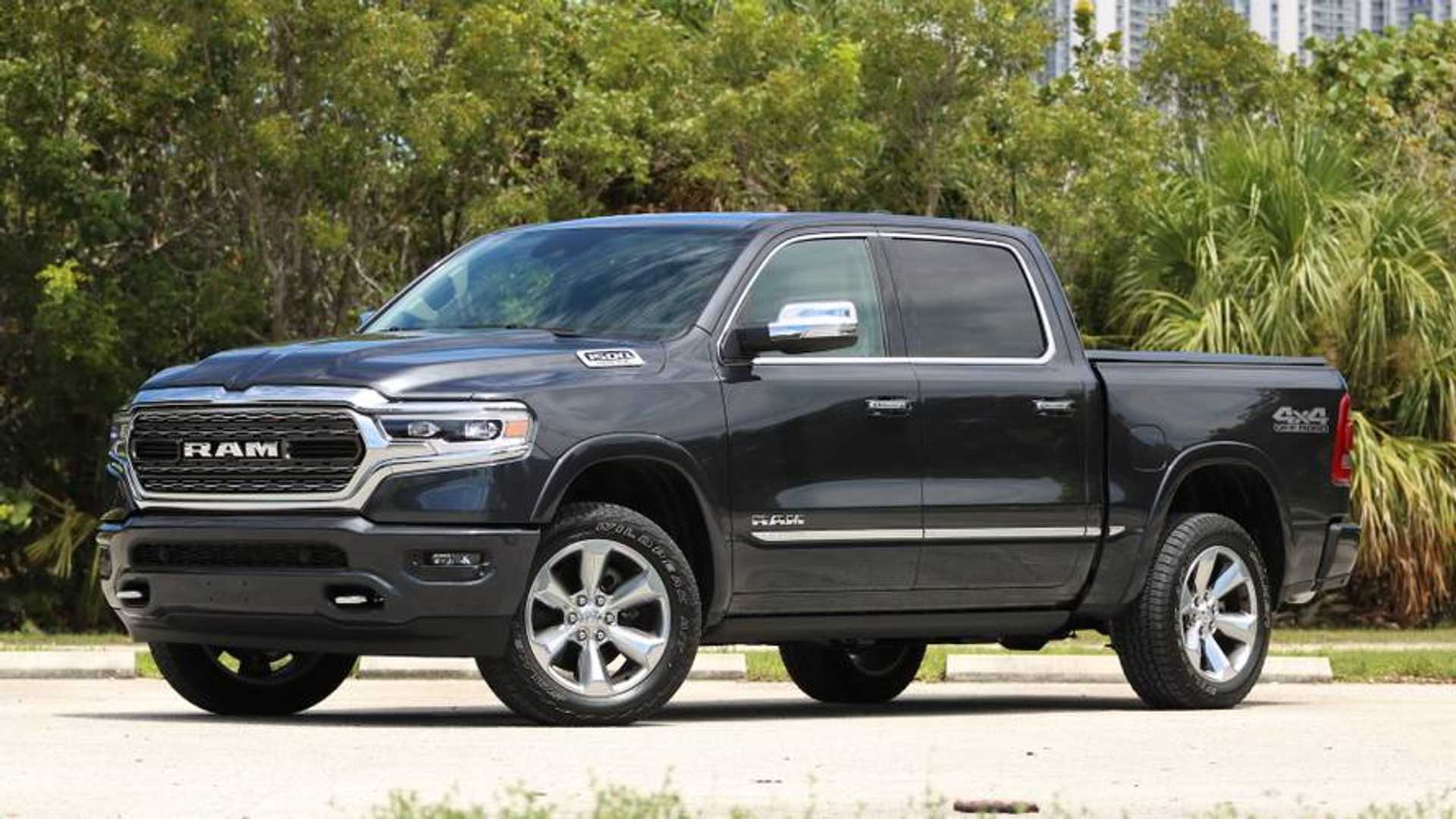
Across the board, the Ram 1500 delivers a remarkably smooth ride, thanks to its rear suspension setup that uses coil springs as standard or available air springs—marking a notable departure from the traditional leaf-spring systems used by most domestic competitors. Trucks fitted with the air suspension system benefit from adjustable ride heights, which improve both fuel efficiency and off-road capability.
Light steering and strong braking also contribute to the truck’s easygoing highway manners and confident stopping power. Whether it’s a dependable workhorse or a mobile executive suite, the Ram 1500 continues to attract a broad range of buyers.
Why It’s Reliable:
- Redesigned HVAC components
- Efficient airflow control
- Durable A/C compressors
5 Trucks With Constant A/C Issues
Air conditioning may not be the first thing that comes to mind when buying a truck—but when it fails in the middle of a scorching summer, you’ll wish it had been. While many modern trucks boast tough exteriors and powerful engines, some consistently fall short where it matters for comfort: the A/C system.
From weak airflow to frequent compressor failures, certain models have earned a reputation for letting drivers down when they need cool air most. In this article, we break down five trucks known for ongoing A/C issues, so you know what to watch for—and possibly avoid—before making your next purchase.
1. Chevrolet Silverado 1500 (2014–2017)
This generation of the Silverado is infamous for A/C problems, especially failed compressors and leaking condensers. Many owners reported issues before 60,000 miles.
Most buyers choose a full-size pickup with the expectation that it will handle daily driving while also being ready for heavy-duty hauling and towing when needed. Meeting that second demand usually requires plenty of muscle. In the past, this meant skipping the base V6 engine in favor of a more powerful—but less fuel-efficient—V8.
However, truck manufacturers have recently stepped up their V6 game, and Chevrolet is now part of that trend. One of the standout features of the redesigned 2014 Chevrolet Silverado is the introduction of a competitive V6 engine—something that was lacking in the outgoing model.
That said, the 2014 Silverado 1500 still offers V8 options, including 5.3-liter and 6.2-liter engines. These powerplants now benefit from direct fuel injection and cylinder deactivation, delivering improved performance and efficiency.
For those who want the Silverado’s roomy cabin and ample cargo space but don’t need maximum towing capacity, the all-new 4.3-liter V6 should prove more than adequate. It produces 285 horsepower and 305 lb-ft of torque and can tow up to 7,200 pounds when properly equipped. It’s also fuel-efficient, with EPA estimates of 18 mpg in the city and 24 mpg on the highway.
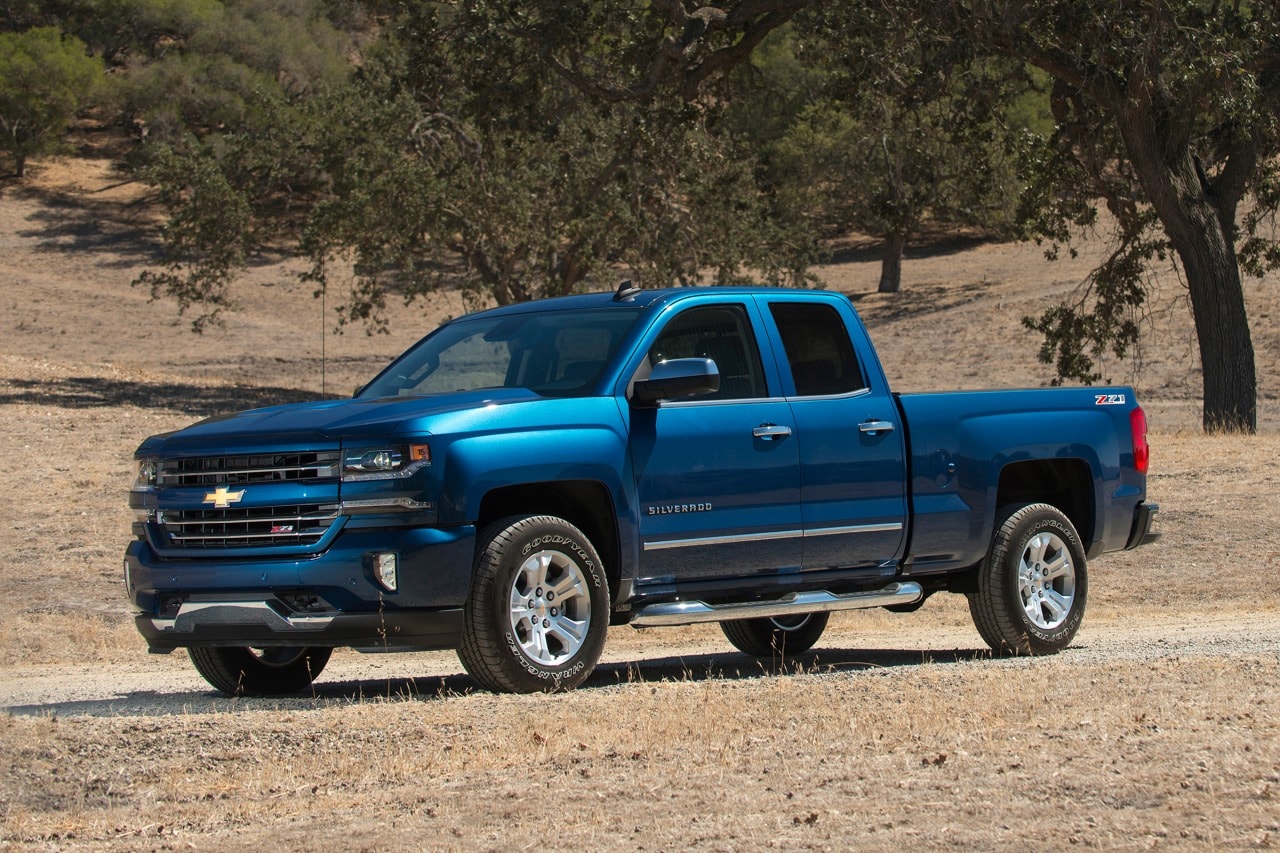
The new Silverado isn’t just stronger—it’s also lighter. For instance, the regular cab version with the V6 and a 6-foot, 6-inch bed weighs 250 pounds less than its predecessor.
Suspension tuning has been updated to improve ride quality, and extended cab models now feature forward-hinged rear doors, replacing the previous reverse-opening half doors. Additional newly available safety technologies include forward collision alert, lane departure warning, and trailer sway control.
While the Silverado’s styling remains familiar, the 2014 model receives thoughtful updates that bring a more modern, aerodynamic edge.
A bold new grille, reshaped bumpers, and sharper body lines give the truck a refreshed, yet unmistakably rugged, appearance. For buyers who frequently transport both passengers and gear, the Silverado 1500 crew cab now offers the option of a 6.5-foot bed in addition to the previous 5.75-foot version.
Inside, Chevrolet has significantly improved the cabin, with upgraded upholstery, dashboard, and door-panel materials. An available 8-inch touchscreen display supports the MyLink infotainment system, complete with smartphone integration, rounding out a list of thoughtful and practical upgrades.
Common Problems:
- Weak or no cold air
- Condenser cracks
- Costly compressor failures
2. GMC Sierra 1500 (2014–2017)
Sharing platforms with the Silverado, the Sierra suffered from identical HVAC defects. The issue was so widespread that GM even extended warranties for affected parts.
The Sierra’s entry-level engine is a 4.3-liter V-6 that generates 285 horsepower and 305 pound-feet of torque, paired with a six-speed automatic transmission. Opting for the 5.3-liter V-8 increases output to 355 horsepower—or 365 horsepower with the All Terrain X package—and 383 pound-feet of torque.
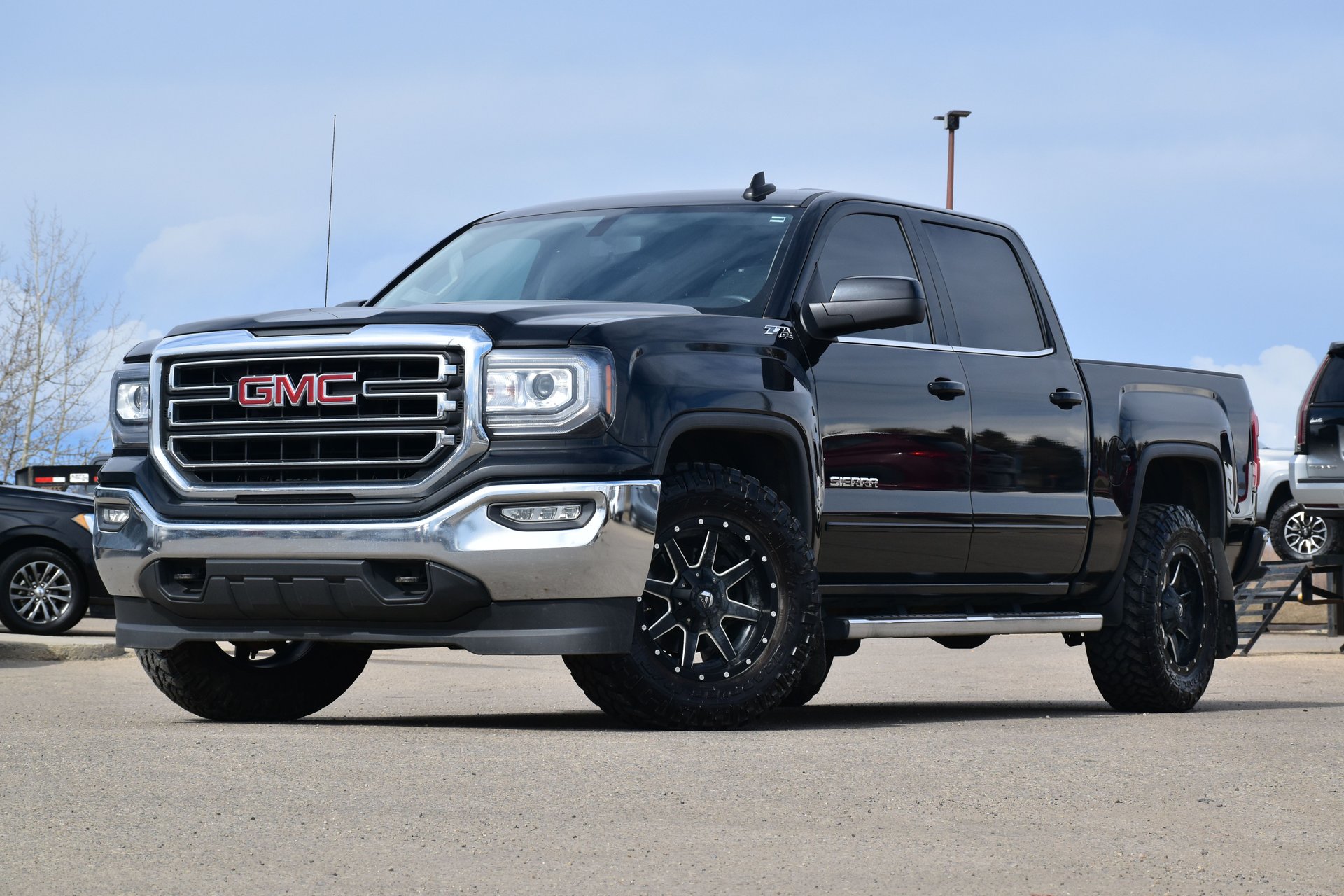
While the six-speed automatic remains standard, an eight-speed automatic transmission is available on the SLT and Denali trims. At the top of the lineup is a robust 6.2-liter V-8 that produces 420 horsepower and 460 pound-feet of torque, mated exclusively to the eight-speed automatic.
When it comes to typical truck tasks—like towing trailers or hauling home improvement supplies—the Sierra performs confidently and capably.
Though it isn’t built for sharp cornering or high-speed maneuvers, it excels at laid-back cruising. Under lighter loads, the ride can be a bit firm on uneven pavement, with road imperfections noticeable through the seat. However, the cabin remains impressively quiet, even when the suspension is working hard over rough patches.
Common Problems:
- Refrigerant leaks
- Recurring compressor failures
- Inconsistent cooling
3. Ford F-150 (2004–2008)
This era of the F-150 faced multiple mechanical problems, and A/C issues were among the most frequent complaints. Blower motor resistors, actuators, and compressor failures plagued owners.
Over the last 30 years, the best-selling vehicle line in America hasn’t been a sedan or SUV, but rather a pickup—the Ford F-Series. This distinction includes not only the F-150 but also the heavier-duty Super Duty trucks and commercial-use chassis cabs. Even so, the half-ton F-150 has consistently made up the majority of these impressive sales numbers.
After receiving a full redesign in 2004, the F-150 has evolved to suit the modern pickup buyer. Today’s owners are often just as likely to use their trucks for commuting or transporting families as they are for hauling loads or towing trailers.
This shift in consumer habits is reflected in the growing preference for crew cab models, which have surpassed standard and extended cabs in popularity.
So why has the F-Series maintained its top-seller status? Its wide appeal lies in its smooth ride quality, quiet and user-friendly cabin, and easygoing driving nature.
Add to that an almost overwhelming range of configurations—body styles, trims, and options galore—and it’s easy to see why the F-150 stands out. Ford’s attention to choice has resulted in no fewer than 75 distinct F-150 variants, giving customers plenty of options and Edmunds’ data team plenty of headaches.
The 2008 model year brought a few incremental updates to the lineup. A new Lariat Limited trim was introduced, along with a SuperCrew body style for the entry-level XL trim.
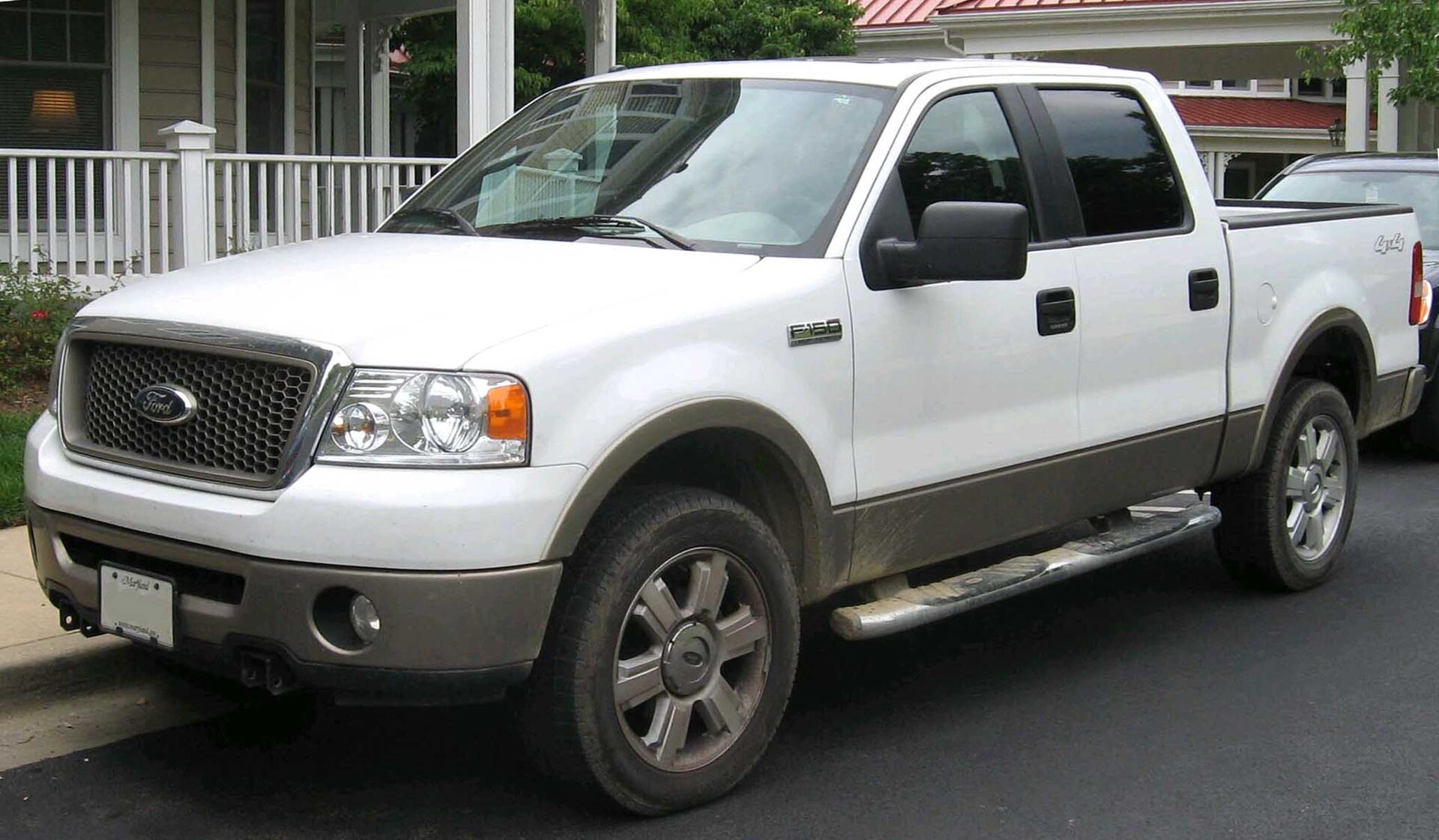
Some practical new features were added as well, such as a rearview camera built into the rearview mirror (which activates in reverse) and a versatile Cargo Management system. This setup includes bins, crossbars, and adjustable cleats to help secure nearly anything—short of a space shuttle—in the bed.
Despite its versatility and comfort, the F-150 trails some full-size rivals when it comes to performance. The 5.4-liter Triton V8 is the most powerful engine available—excluding the niche supercharged V8 in the Harley-Davidson edition—and it boasts a maximum towing capacity of 11,000 pounds.
On paper, its 300 horsepower and 365 pound-feet of torque sound solid, but in real-world driving, the engine feels underwhelming compared to competitors like the Chevrolet Silverado and Toyota Tundra.
A big part of this performance gap comes down to the transmission: with just a four-speed automatic, the F-150 is at a disadvantage next to rivals equipped with five- or six-speed units that offer better acceleration and efficiency.
Common Problems:
- Blower not functioning
- Clicking noises from vents
- A/C loses effectiveness over time
4. Nissan Frontier (2005–2012)
Owners of older Frontiers have consistently reported A/C systems that break down prematurely. From failing compressors to leaking hoses, the list of issues is long.
The 2005 Nissan Frontier XE (Manual) 2WD King Cab offers a practical layout with a body style classified as a truck and a rear-wheel-drive (RWD) drivetrain.
Under the hood, it’s powered by a 2.5-liter inline 4-cylinder engine producing 154 horsepower at 5,200 rpm and 173 lb-ft of torque at 4,400 rpm. The engine runs on unleaded fuel and is paired with a manual transmission. The configuration features four cylinders arranged in-line.
This model delivers an estimated fuel economy of 22 mpg in the city and 25 mpg on the highway, making it relatively efficient for its class. The standard ground clearance stands at 8.7 inches, while the vehicle has a gross vehicle weight rating (GVWR) of 4,676 pounds and a payload capacity of 1,001 pounds.
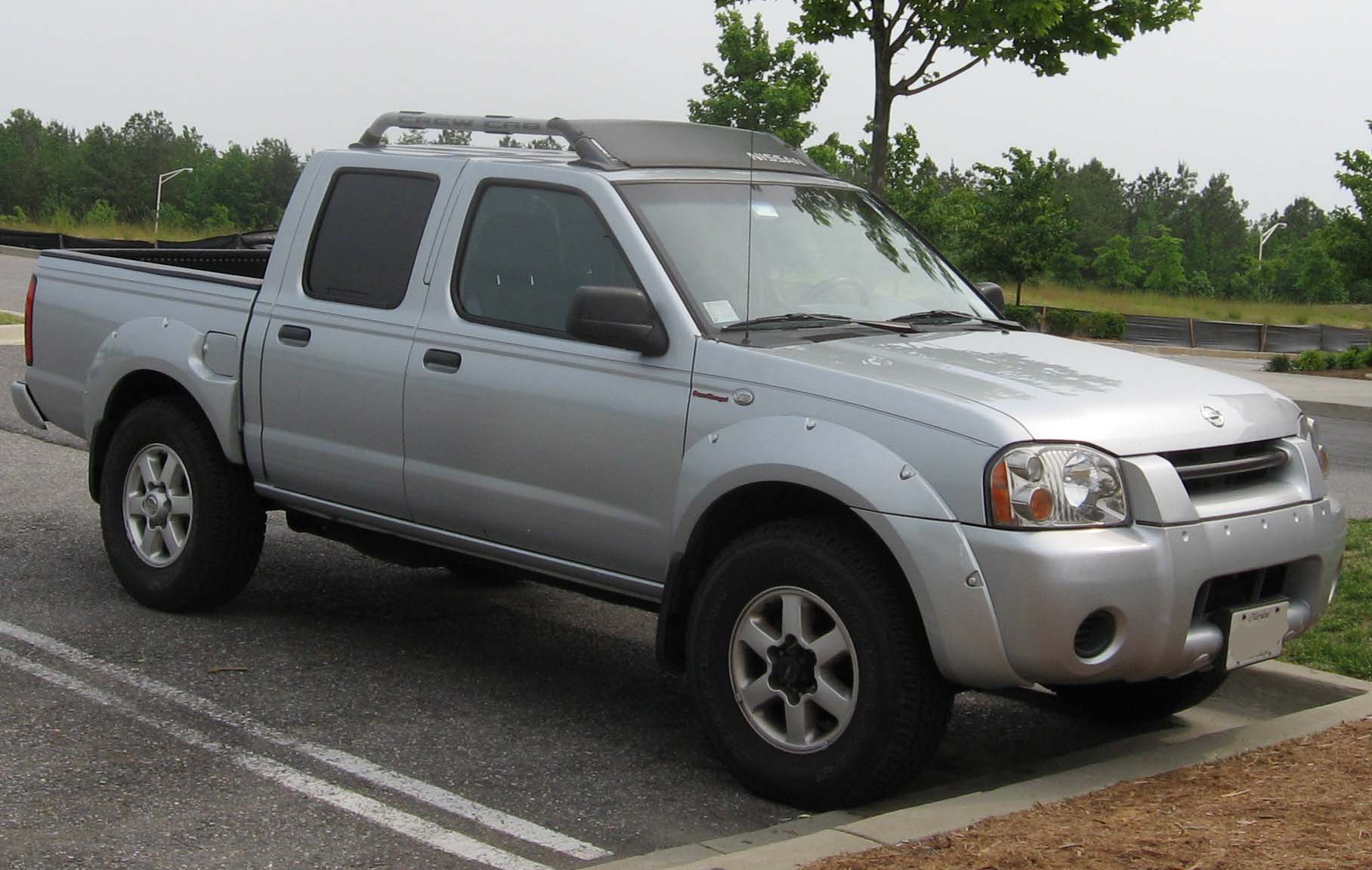
In terms of dimensions, the Frontier measures 205.5 inches in length, 72.8 inches in width, and 69.7 inches in height. While the wheelbase is not specified, the vehicle offers seating for four occupants.
Interior space includes 39.7 inches of front headroom and 38.3 inches in the rear, 42.4 inches of front legroom and 25.4 inches of rear legroom, with 58.3 inches of front shoulder room and 54.9 inches in the rear.
The curb weight of this Frontier variant is 3,675 pounds. Towing capacity, cargo volume, engine displacement, transmission type, and driving range are not listed.
This compact yet capable pickup is designed for drivers seeking simplicity, functionality, and respectable fuel economy in a midsize truck.
Common Problems:
- Sudden compressor failure
- Leaks in evaporator coils
- High cost of repair due to part unavailability
5. Dodge Ram 1500 (2002–2008)
Early third-generation Ram trucks often suffer from unreliable A/C systems. The blend doors, actuators, and compressors frequently fail, leading to uneven or no cooling.
Although the previous generation Ram pickup (1994–2001) was a major success for Dodge, after seven years on the market, the company decided it was time for a redesign.
However, Dodge was careful not to disrupt the formula that had worked so well. Instead of making drastic changes, the design team doubled down on the truck’s iconic styling cues, further emphasizing them. A prime example of this is the grille, which has been made even larger than before.
Additional exterior enhancements include jewel-like headlight and taillight clusters, along with the largest standard wheel and tire setup offered on a light-duty full-size pickup. And when we say large, we mean it—even the base ST two-wheel-drive model comes equipped with 245/70R17 tires. For Sport models, the truck rolls on massive 20-inch alloy wheels paired with 275/55R20 tires.
The 2002 Ram 1500 is offered in two cab configurations—regular and Quad—along with two bed lengths measuring 6.3 feet and 8 feet, respectively. Buyers can choose from three trims: the base ST, mid-range SLT, and the more upscale SLT Plus. An optional Sport package is available for the SLT and SLT Plus trims.
Acknowledging that many owners rarely utilize their truck beds to full capacity, Dodge made a smart move by shortening the standard bed by 3 inches, bringing it to 6 feet 3 inches, and using that space to expand the passenger cabin
. As a result, the new Ram Quad Cab offers interior space comparable to a crew cab, while maintaining nearly the same overall length as last year’s Quad Cab model, which featured smaller, rear-hinged back doors.
To enhance rear-seat access, the 2002 Quad Cab now uses conventional rear doors that swing open almost 90 degrees. For those who still need more bed space, an 8-foot option remains available.
The ST trim comes equipped with air conditioning, an AM/FM/cassette stereo, a 40/20/40 split front bench seat, and a sizable fold-down center armrest with built-in storage.
Moving up to the SLT trim adds features like cruise control, larger 265/70R17 tires, chrome wheels, cloth seats, an overhead console with a trip computer, and power-operated windows, door locks, and mirrors.
The Ram 1500’s powertrain lineup includes two new engines: a 3.7-liter V6 producing 215 horsepower and 235 lb-ft of torque, and a 4.7-liter V8 generating 235 horsepower and 295 lb-ft of torque. The V6 is limited to 2WD Regular Cab models, while all others receive the V8.
Although the 4.7-liter engine debuted in the 1999 Jeep Grand Cherokee, it’s new to the Ram lineup. Also returning is the familiar 5.9-liter V8 with 245 horsepower and 335 lb-ft of torque. Despite its strong numbers, the 5.9 is showing its age in both performance and fuel economy, especially when compared to top engines in Ford and GM trucks.
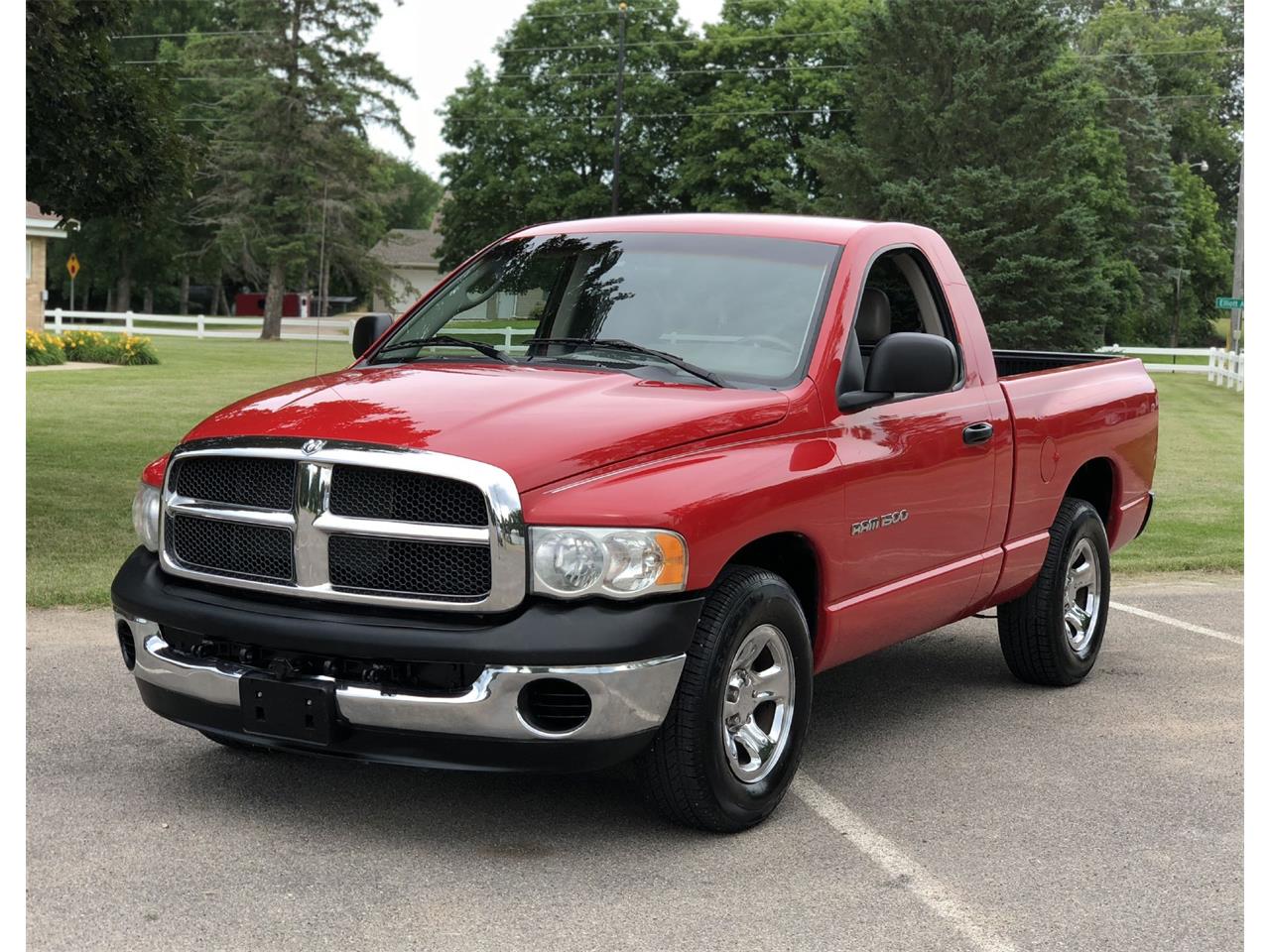
A five-speed manual transmission comes standard with the 3.7 and 4.7 engines, while a four-speed automatic is optional on those and standard with the 5.9 V8. When properly configured, a Regular Cab Ram can tow up to 8,860 pounds, while the Quad Cab’s towing capacity tops out at 8,350 pounds. Payload capacity is rated at 2,530 pounds for the Regular Cab and 1,770 pounds for the Quad Cab.
The 2002 Ram 1500 rides on a strong, fully boxed frame with thick side rails that enhance structural rigidity, improve handling, and help eliminate unwanted squeaks and rattles.
All Ram 1500s come equipped with an independent front suspension and four-wheel disc brakes, with brake rotors measuring more than 13 inches in diameter—the largest in the class. A rear-wheel antilock braking system is standard on the ST and SLT trims, while the SLT Plus gets four-wheel ABS, which is optional on other models.
Dodge introduces several notable safety innovations to the full-size pickup segment with this model. Side curtain airbags are available across the lineup.
Additionally, the front center seat in Regular Cab models and the rear center seat in Quad Cabs now come with three-point seatbelts. Optional on the SLT and SLT Plus trims are power-adjustable pedals—a feature originally introduced by Ford—that let shorter drivers maintain a comfortable and safe seating position without moving too close to the steering wheel.
With the redesigned Ram 1500, Dodge has created a well-balanced truck that improves upon its predecessor with greater capability, better ride quality, enhanced handling, and a broader set of safety features.
Common Problems:
- Broken blend doors
- Failure to switch between hot and cold
- No airflow from vents
A dependable A/C system can significantly affect your comfort and driving experience, especially if you’re spending long hours behind the wheel.Trucks like the Toyota Tundra and Honda Ridgeline prove that reliability doesn’t have to be compromised.
On the other hand, if you’re considering a used Silverado or an older RAM, be prepared for potential HVAC repairs. When shopping for a truck, always check the service history and user reviews specific to A/C performance it’s one system you don’t want to gamble on.

